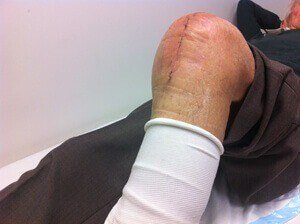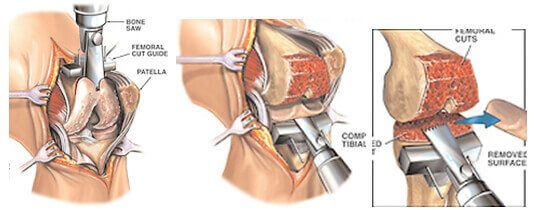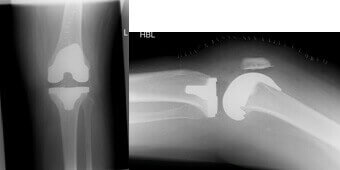Total Knee Replacement
Total knee replacement surgery is commonly performed for painful degenerative arthritis of the knee, post traumatic arthritis and other conditions such as inflammatory arthritis like rheumatoid. Treatment reduces pain and improves function and flexibility. The surgeon will normally discuss all non-operative measures like activity modifications, weight loss, optimizing medication, temporary injections of steroid/hyaluronic acid and physiotherapy before considering surgical options.
Dr. Nizam performs both computer navigated and non-navigated knee replacements. Normally the femoral and tibial surfaces are replaced with extremely durable metal-alloy implants with a plastic insert between. The patella may or may not be resurfaced, depending on the condition of individual knees.
A Tourniquet is NOT used in majority of cases around the thigh. In Dr. Nizam’s experience they may lead to post operative thigh pain with a risk of reduced mobility and range of movement.
2 Week Scar After Enhanced Recovery / Rapid Recovery Knee Replacement

85 yr old male – 2 weeks after Rapid Recovery / Enhanced recovery Knee Replacement walking without a limp unaided and already Driving a car from 10 days post surgery.
85 yr old male , 2 weeks after Enhanced Recovery Knee Replacement has 0-120 degrees of active flexion and extension and no pain.
Click on the images to view the enlarged images.
Knee replacement surgery involves “resurfacing” the knee joint.
This involves placing a metal component on the femur (thigh bone), a metal component on your tibia and plastic between the two joints to act as cartilage or shock absorption. On some occasions the under surface of your knee cap or patella is replaced with a plastic component for further stability and structural integrity. The components move together seamlessly to allow near to normal function in the knee.

FAQs after Knee Replacement Surgery
Click here for more information about Total Knee Replacement.
Who is suitable for surgery?
Surgery is usually recommended only after careful and extensive diagnosis of a knee problem. This includes testing the severity of pain and lack of mobility and function.
Anaesthetic
This service will be provided by an experienced, highly-competent anaesthetist who will discuss your anaesthetic and pain management prior to, during and after surgery. It is very important you bring along your partner/spouse or family member for this consultation.
Further information
Dr. Nizam will provide further detailed information to all patients undergoing total knee replacement surgical procedures.
Our Enhanced Recovery and Pain Management Program in Joint Replacements
The first step involves injecting local anaesthetic into the operative site at the time of surgery, in essence to numb the area so that after knee replacement surgery the patient is relaxed with less discomfort or pain. This will enable you to walk within 4 hours after joint replacement with less pain and soreness allowing you to make a rapid recovery. The details of this will be discussed in detail at consultation where you can have any questions or concerns explained.
In the majority of cases, patients will be discharged home the following day after total knee replacement surgery with crutches. This may seem fast, convenient and even unlikely – but yes, this is possible. Dr. Nizam worked closely with the Sydney-based team responsible for pioneering this pain management and early mobilisation regime. He collaborated with them successfully over six years with excellent outcomes.
Many patients wish to know how soon they can return to the following activities:
Driving: Depending on the complexity of knee replacement surgery, patients can drive as early as 2-3 weeks after total knee replacement (individual results may vary).
Sleeping: Patients are able to sleep in any position that they find comfortable without restriction or discomfort.
Sex: can be commenced almost as soon as comfort and confidence allows.













